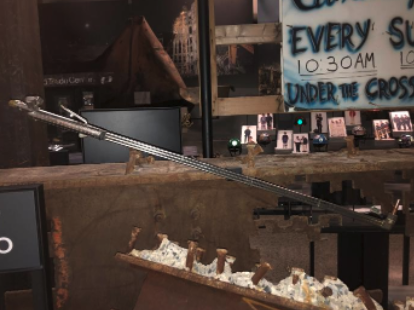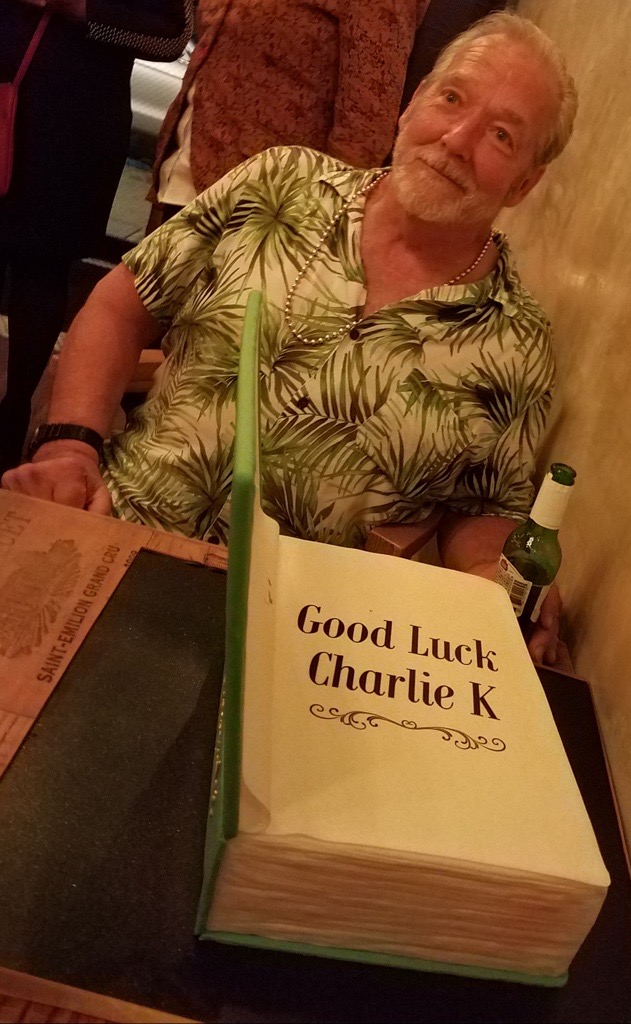Make a donation to the museum
Rescue & Recovery at 20: Rafe Greco, Laborers' International Union
Rescue & Recovery at 20: Rafe Greco, Laborers' International Union
- May 16, 2022
Two weeks from today, on May 30, an official ceremony will mark the 20th anniversary of the formal end to rescue and recovery efforts at Ground Zero. As we lead up to the commemoration, we're highlighting a diverse range of rescue, recovery, and relief workers in recognition of their tireless efforts, sacrifice, and spirit.
The following Q&A features Rafe Greco, sculptor, welder, and metalworker with the Laborers' International Union of North America, Local 79.

Oxyacetylene torch carried by Rafe Greco at Ground Zero. Greco later transformed it into a memorial, engraving the handle with the number of lives lost and the words: "You are always in our hearts."
Where were you on 9/11?
On the morning of September 11th, I was working on a scaffold above 42nd Street, hanging a net on the façade of an abandoned theater. My attention was snagged by crowds of people who seemed to be standing in front of a large-screen television in Times Square. I couldn’t see the screen myself. When I came down the scaffold, I saw the image of Tower 1 burning. As my work was suspended for the day, I went home. I remember pacing in front of the TV because I felt so helpless and I couldn’t sit down.
As the day progressed, I made the decision to make my way down to the World Trade Center to volunteer. By 1 p.m., I was working at the base of World Trade Center 7. Around 5 p.m., I watched the collapse of WTC 7. As I was a welder with certifications in the use of the oxyacetylene torch, I entered the Ground Zero site around 11 p.m., where I began to cut and pull steel out with other volunteers. I worked there for three straight days, weathering falling debris and several collapse scares.
Tell us a little more about the role you played in the rescue and recovery operations?
Two weeks later, I had secured a job with a demolition company that was clearing WTC 7. By December, I was assigned to clear the sites of the two towers. One of my tasks was to cut steel to enable human remains to be removed. It felt good to be part of the recovery and it felt good to accomplish our goal.
Can you describe the bond between yourself and other recovery workers? How has this community impacted you?
Many workers were struggling to come to terms with the horrific events, many of us were aware that families were counting on us to help recover the remains of their loved ones. I wanted to be able to fabricate a tangible reminder. What I did for families, for me and my crew, was cut out some crosses. When family would come down, I could give those crosses to the family. They really appreciated the gesture and it made us feel good. I knew that for years to come, people would look at it and remember that it came from the World Trade Center.
Working at Ground Zero led me to my wife. Bianca is a Tower 1 survivor and was a recovery worker with Turner Construction.
What does May 30 mean to you?
When the top of the Last Column first surfaced above the debris at Ground Zero, I kept track of it as it acquired its flag and gradually accumulated inscriptions and images. I worked hard to be involved in the final cutting ceremony on May 28, 2001. I was one of four workers selected to represent the trades by ceremonially burning through the corners of the column before it was lowered onto the flatbed truck. I was proud to be there with fellow members of Local 79, New York General Building Laborers, and other workers. That was our night, and that was the night that all the construction workers filed down into the hole together.
Do you have any health issues connected to your time at Ground Zero?
No, I have been blessed and very lucky that I don’t. I have guys that worked down there for six months who have passed.
To the generation who is growing up with no memory of September 11th, why is it important to share your story and the stories of others with them?
I have never been to war, but I imagine it was like this. The difference was that our response was construction workers and volunteers. Our “boots on the ground” were first responders. As a community, we stood up and said that this couldn’t keep us down. We were going to recover. I worked with a lot of great people, some of whom have passed. They need to be remembered.
Anything else you'd like to add?
The toughest part of my experience was when we would leave Ground Zero for lunch. We’d just go a couple of blocks away to grab some food. Every time we left, there would be crowds of people gathered. There was always someone who was crying in that crowd. That was devastating because it was obvious they had lost someone they loved. Coming face to face with someone’s loss was difficult. For years, I had nightmares about the site- fire, debris, and death.
Compiled by Caitlyn Best, Government and Community Affairs Coordinator
See Also:
The MEMO Blog: Symbols Forged From World Trade Center Steel
Wisconsin WTMJ: Local First Responder Pleased With Bill Passage
Previous Post
Rescue & Recovery at 20: Charlie Kaczorowski, Department of Design & Construction

Charlie Kaczorowski was with the Department of Design & Construction on September 11; he spent months at Ground Zero helping with rescue and recovery efforts. Kaczorowski died this March. Today we honor his sacrifice with a special blog post culled from past Museum interviews.
Next Post
Ukraine Close to Our Hearts on International Museum Day
We marked International Museum Day with a special Survivor Tree lighting ceremony in support of our museum colleagues and the people of Ukraine.